Ask an Eskimo about types of paint, and they may tell you paint is paint. Ask an Eskimo about snow and they’ll tell you over 50 different types of snow, all with different names! For this post, we’ll be showcasing our expertise on water based paints, and whilst there won’t be 50 different examples, we’ll take you through the colourful, and extremely varied world of water based paint. Click here to skip recommended products and to continue reading.
Get 10% Off These Water-Based Paints
Voucher code will appear on product page
Water based products are becoming an increasingly popular choice for industrial and commercial projects and when you take a moment to look, it’s easy to see why. Most of Europe have been using water based technology for high performance paints and coatings for many years with great success, although in fair to our UK manufacturers they do have a more suited climate for them! Here in the UK our industries have struggled with even the suggestion that a water based product may be better suited than the conventional solvent based stalwart. However, with ever changing regulations, tightening health and safety and the continuous strive for longer lasting, better performing products water based systems have a real place in today’s market.
Contact us or leave a comment at the end of this post with your paint/decorating requirement
Here at Rawlins we are passionate about finding new and innovative products that lead their respective fields and we are firm believers in the water based revolution! So, that’s why we’d like to use this article to take 10 minutes of your time to make our case to professionals and apprentices alike for water based paints. Before clicking to buy a tin, here’s some factors to consider, to check that this is in fact the best paint for the job.

Zinsser’s AllCoat range has water-based paints in virtually any colour for nearly any surfaces! Buy them here
To be clear before we proceed, we won’t be covering decorative, general use products for jobs around the garden and home. This is about the high performance, professional products we work with day in and day out for commercial projects all over the UK for roofing, cladding, fire protection, flooring and more.
Quick Links To Relevant Sections
- Water Based Vs Solvent Based Paints: VOC’s (Volatile Organic Compounds)
- Water Based Vs Solvent Based Paints: What You Need to Know
- Working with Water Based Paints
- Best Practice for Applying Water Based Paints
- Drying Times
- Cleaning Water Based Paint from Equipment
- Water Based Paint Usage
- Water Based Floor Paints
- Water Based Wall Paints
- Hygienic Water Based Paints
- Water Based Roof Paints
- Water Based Paints for Metal
- Water Based Paints for Wood
- Water Based Fire Retardant Paints
- Water Based Paint Colours: RAL and BS Shades
- Further Resource
Water Based Vs Solvent Based Paints: VOC’s (Volatile Organic Compounds)
In 2007, new VOC Regulations were introduced in the UK, the new VOC limits were applied in two phases to allow product development and a managed transition to the new requirements.
- Phase I: 1st January 2007
- Phase II: 1st January 2010
All products manufactured from 1st January 2007 onwards had to be compliant in formulation and labelling. Non-compliant products manufactured before 1st January 2007 and 1st January 2010 respectively could be placed onto the market for a 12-month period after these dates. After that time, they had to be removed from the market.
Here in 2016 all products must now be manufactured to be compliant, before we move on, a quick Q&A courtesy of the BCF (British Coatings Federation);
What is a VOC and why are they used in paints?
Volatile Organic Compounds or VOCs are specific materials which evaporate readily and are found in the atmosphere from vehicle exhausts, cleaning agents, furniture polish and fabric softeners. Examples in paints are white spirit, ethanol, xylene and butyl acetate where they play an important part in controlling viscosity, flow and drying. In the Regulations VOCs are ‘solvents’ that have a boiling point below 250°C at standard atmospheric pressure.
Why was this legislation introduced?
VOCs are emitted from many sources such as road vehicles and aircraft, cleaning agents, cosmetics, aerosols, paint and industrial operations. They can accelerate the rate nitrogen oxides (from combustion processes) react with sunlight to create low level ozone and photochemical smogs.
Although paints and coatings contribute a very small percentage of the total amount of VOCs emitted in the UK. Coatings manufacturers have, in the past, implemented voluntary polices to reduce VOC usage.
What is the UK legislation on VOC’s?
The new UK legislation is based on EU directive 2004/42/EC which all European Union member states must introduce. It covers coatings applied to buildings, their trim and fittings, and associated
structures when applied for decorative, functional and protective purposes. It includes imported products but specifically excludes aerosols and products applied under licence to historic buildings.
The legislation classifies products into categories which defines separate VOC limits for solvent and waterborne products. All products in scope of the legislation must also be labelled accordingly and the VOC limit applies to the ready-for-use product (including two-pack coatings) and includes any recommended thinners.

Call our sales and technical support team
Water Based Vs Solvent Based Paints: What You Need to Know
Now we are all up to speed on VOC’s, it starts to piece together the change in attitude the UK market had towards water based paints and coatings. Once the new VOC regulations were in full swing and ‘old’ stock was no longer available users started to notice that some of their ‘go to’ products they’d been using for years, no longer had the same properties they loved about them because various changes had been made to their formulations to bring them within regulation.
This opened the door for water based products as users went on the search for new products to replace their existing ones. What they found after some due diligence was that because of these new regulations water based products in most instances easily fell within regulation without having to compromise on their manufacture/formulation meaning they outperformed with ease their solvent based counterparts.
Now obviously this isn’t always the case, there are and always will be instances where a solvent based product will be better suited and it doesn’t mean that water based is always best, BUT these regulations although frustrating for many, levelled the playing field for water based technology and allowed the products to be considered instead of overlooked and it turned out, they were actually pretty good!
In the last five years, Rawlins Paints have been stocking more and more water based products, and we’ll take a look at a few choice ones throughout this blog-post.
Let’s start with the next time you’re on site and somebody asks the question, “what’s the difference between water based paint and solvent based paint?”
Water based paints can cover a variety of technologies and products but in its simplest form it means the product has been manufactured with water as its ‘solvent’. Water based paints can nearly always be thinned and cleaned up (if required/specified) with clean, cold water. Therein lies a small advantage in itself as you will never be caught short of thinner/cleaner and best of all its effectively free! Just like solvent based paints, water based products can include epoxies, polyurethane, acrylics, and more. As a general rule they will be safer to use and lower odour than solvent based products.
Solvent based paints are a little trickier to define as this is a very generic term that often encompasses products that aren’t strictly speaking ‘solvent based’. However, without splitting hairs solvent based paints contain a solvent of some sort and generally speaking are usually more hazardous to work with and higher in odour. Ensuring the correct thinner is used to dilute the product is extremely important to guarantee performance. Flammability and environmental impact also factor into choosing a solvent based product but they can offer advantages in lower temperatures and projects that require chemical resistance or fast curing times.
Working with Water Based Paints
Best Practice for Applying Water Based Paints
It is advisable to store water based paints in dry environments of between 5-30°C, protecting them from sharp drops or spikes in temperature change. All products have a minimum temperature for use, water based paints are usually around 8-10°C as a minimum, with a maximum air humidity of 80% R.H. They also have maximum temperatures which can be just as damaging if ignored, this can be as high as 55°C with some products. In all instances, the substrate temperature must be at least 5°C above dew point. Outside of these parameters water based paints can be severely affected, not just for application but also long term performance and drying. In certain instances, it can render the product completely defunct.
As with all products, some will require thinning, others will not. Certain products may have particular application equipment that is recommended to get the best results so check the product data before use.
Drying Times
On the whole, water based paints usually have quick touch dry time which can be great for the job at hand but difficult if trying to apply by brush or roller. Poor aesthetic application tends to be from the applicator over working the product, thinning the product may help (if recommended) and keeping brush/roller strokes to a minimum. Try to adopt a mind-set of catching any defects on an additional coat once sufficiently dry rather than trying to go back over an area to make it good there and then. Obviously spray application resolves all the above issues but is not always possible due to location and/or budget.
“It’s like watching paint dry” – how often have you heard that statement, and do you know what you’re watching as paint dries? Answers later on.
OK, answers now, as it’s not exactly a cliff-hanger question, is it! Single pack, air drying paint (most normal paints) dry by the ‘solvent’ (can be water) in the paint layer evaporating slowly (or quickly depending on what product you use!) changing the paint on the surface from a wet layer to a dry film. You may have seen paint before that is soft to the touch, you can push your nail into it or make a thumb print on the surface. This happens when paint is applied thicker than it should be. The top layer of the wet paint quickly skins over and traps the remaining solvent in not allowing it to evaporate. This is why it’s important to check the coverage rate on a product and stick to it – not deciding you can put it on a bit thicker and do it in one coat!
Two pack products dry in a different way by a chemical reaction. The two components on their own wont dry but when mixed together cause a reaction which cures the paint/coating providing a much harder, tougher, longer lasting paint film.
Cleaning Water Based Paint from Equipment
For most water based products cleaning of any equipment can be easily and safely carried out with warm soapy water, no nasty solvents required. If you have any further tips and tricks, please share them in the comments section below.
Water Based Paint Usage
It is estimated that up to 80% of used agricultural paints are now water based, steadily replacing their solvent based counterparts. The ‘quality’ of water based paints have greatly improved over the years, and they are now considered to leave a very durable coating on a surface, both internally and externally.
From swimming pools to barns, roofing to railings, and floors to cladding, our water based paints are suitable for nearly any application requirement.
Water Based Floor Paints

Buy high performance and professional finish floor coatings at Rawlins
Our regular readers will know that there are water based floor paints available for areas which are more difficult to ventilate, and where there may be regular food preparation – such as canteen floors.
As opposed to 2 pack epoxy resin floor paints, where components are mixed together to create a more durable and chemical resistant floor coating, water based floor paints can be applied to floors leaving a light to medium use finish. Whilst not suitable for vehicular use, they can work well in interior and exterior pedestrianised areas.
313 Acrylic Floor Paint by Rawlins Paints, is a quick drying, water based floor paint which can also be used externally for occasional vehicle use zones, such as tarmac and asphalt. Alternately, Rust-Oleum’s 5200 Epoxyshield UItra is another quick drying, single pack and water based coating that leaves a satin matt finish. If you’re looking for a very specific colour check out Blackfriar Professional Acrylic Floor Paint which can be mixed to over 1,000 different colours!
Not all floor surfaces are suitable for water based paints, as their adhesive properties may be compromised by previous coatings or how they have been treated and sealed. Datasheets are available advising what to check for in seeing whether a specific paint is suitable for your interior or exterior floor space. Alternately, contact us and we’d be able to advise you on a more suitable product.
Water Based Wall Paints
Water based paints have always been the preferred choice for painting interior and exterior wall surfaces due to their quick drying properties, low odour and easy application. Contractors tend to want to switch to solvent based products when doing trim or when they require a more durable/cleanable surface. This is no longer necessary as we offer water based products that can be used on all trim and provides a hard wearing, cleanable surface second to none.
Water based gloss paints can be used on skirting boards, trims and window sills and compared to solvent based gloss, the water based coating is less likely to yellow, or smell as strong. In the UK, oil and solvent based gloss paints are still popular for doors, glossy woodwork finishes and furniture, due to its durability – so, if painting over gloss paint, you must use specific primers, like Zinsser Bulls Eye 123, which can then be painted over with a water based gloss.
Hygienic Water Based Paints
One pre-requisite of hygienic paints is that can be used in areas still open to the public, therefore they must be low odour and ideally contain technology that actively battles bacteria, germs, etc. Suitable for leisure centres, hospital wards, care homes and other public facilities which cannot ‘close down’ for decorating, these two hygienic paints are both water based and come highly recommended from both Rawlins Paints and customers who have been extremely happy with their end result.

Hygienic and scrubbable floor coatings, for the most demanding environments
Limited on colour but high in performance, Coo-Var Guard-Coat has been designed to aid the fight against bacteria in health facilities. It is an anti-microbial coating which has an antibacterial action created with silver ion technology and produces an exceptionally hard wearing paint finish suitable for floors and walls.
For areas of high coverage, Rust-Oleum’s Biosan Aqua Matt is available in a wonderful range of neutral and pastel colours, as found in most doctor’s surgeries and chemists. This wall-coating can be used on primed woodwork, masonry, plaster and interior concrete.
Water Based Roof Paints
Due to the expansive areas of some commercial roofs, paint is applied by spray equipment, which is where Rust-Oleum Mathys Noxyde’s water based roof coating excels. Simpler than other expensive and dangerous polyurethane systems, it forms a thick anti-corrosive membrane that offers excellent waterproofing protection.
Similarly, for sloping roofs, Rust-Oleum Mathys’ Dacfill Waterproofing Paint is a watertight membrane than is also a very good alternative to asbestos sheet replacement.
Stocking the leading roof paint brands and products in the UK, Rawlins Paints’ selection of roof coatings will outline whether they are water based in both the on-page product description and the accompanying datasheets.
Water Based Paints for Metal
Jotun Pilot WF is a one component water borne acrylic topcoat that is a versatile, fast drying product for exterior and interior use. It has a glossy finish with good gloss retention and dries down to 10°C but tolerates to freeze in shorter periods of time, e.g. under transportation.
Rust-Oleum Mathys Noxyde Peganox is a water based, low VOC, single component, elastomeric coating that provides rust-proofing, corrosion and waterproofing protection optimized for brush or roller application. It forms an anti-corrosive membrane that has a high resistance to water, salt spray, acid and aggressive environments making it virtually unaffected over time.
Coo-Var Water Based All Metals Primer is a water based rust preventing general purpose metals primer. Coo-Var Water Based All Metals Primer is suitable for priming most metals including iron, steel, aluminium, brass, copper and more.
For high heat metal, such as BBQs, fire grates, stoves and chimneys, Blackfriar’s High Heat Resistant Paint can withstand temperatures of up to 600ºC and is water-based. Suitable for internal and external use, it is currently only available in black.
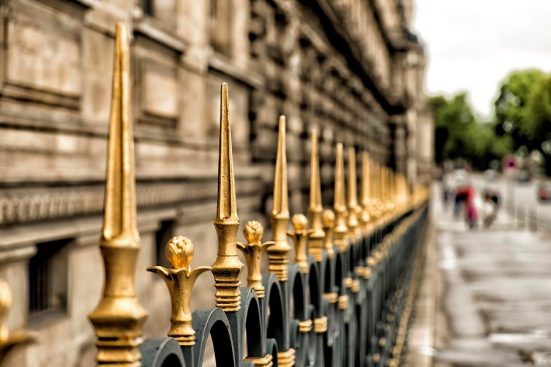
Rawlins are #1 for specialist metal finishes
Ardenbrite’s water based metallic paint is available in gold, silver and bronze, for interior and exterior use on metal, wood, ceramics and most plastics. Use it on railings and gates for the ideal finishing touch!
Water Based Paints for Wood
Before using water based paint on timber, check if you need to apply a suitable wood primer first. Some products require them to improve the adhesion between the surface and top coat of paint, other products can be applied directly.
Remmers Rofalin Acrylic is an opaque, waterborne exterior wood protection coating with very good colour stability and long maintenance cycles. It contains fungicides against surface fungi build up on the substrate. The combination of high quality binders and high content of pigments protects the woodwork against damaging UV rays and gives a very good shield against weather.
Zinsser AllCoat Exterior is an ultimate performance, satin or gloss finish, all surface paint designed to offer up to 8 years’ protection on a wide range of exterior surfaces. Designed for the long term decoration of timber, metal, masonry, plastic, concrete, cladding and more.
Water Based Fire Retardant Paints
A number of Rawlins Paints’ leading fire retardant and intumescent paint coatings are water based, such as Brosteel Ultra, designed to provide up to 60 minutes fire resistance on structural steel.
Alternately, for wood, timber and plasterboard, Zeroflame Fire Retardant Paint is available in white, and will achieve Class 1 and Class 0 on timber surfaces.
These waterborne products are extremely easy to use, come with full datasheets and technical support from Rawlins Paints.
Water Based Paint Colours: RAL and BS Shades
If you can’t find the colour you’re looking for and know the specific RAL, British Standard (BS) or NCS colour you require, contact us and we can see if we can produce this colour for you. Alternatively, send us a sample of something with the colour on you want and we’ll see if we can match it! We do this regularly for companies wanting their cladding paint to match their corporate colours or for floors which needs to be the same as they’ve always been, etc.
Further Resource
If you have any further questions about water based paints available at Rawlins Paints, please contact us, or alternately leave a comment below, and we’ll get straight back to you.
 Rawlins Paints Blog Industrial Paint Tips, Guidelines & DIY Articles
Rawlins Paints Blog Industrial Paint Tips, Guidelines & DIY Articles
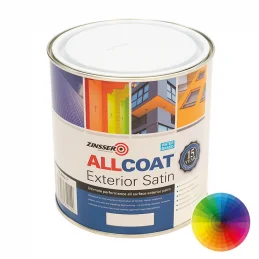
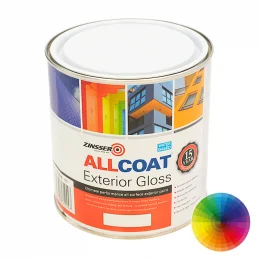
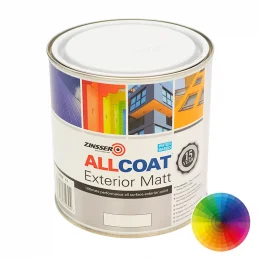
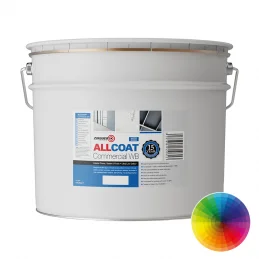
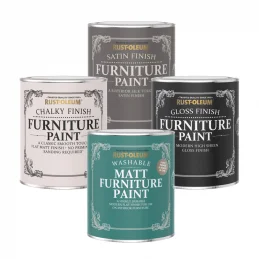
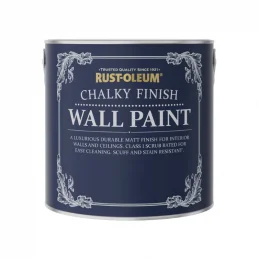
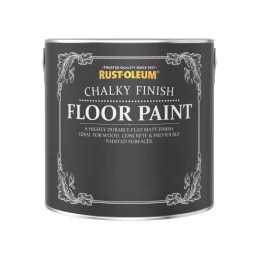
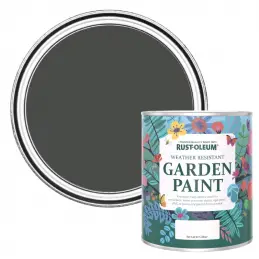
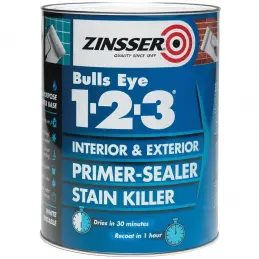
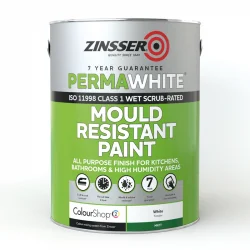
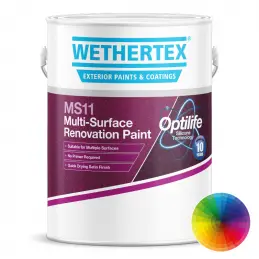
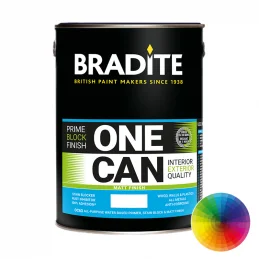


I have recently been appointed caretaker to a complex of flats. One of the main jobs to do, is to paint the rusted railings. I have removed all debri and treated with red oxide where necessary. The old black paint is solvent based. Is it ok to prime and gloss with water based paint
Good morning Stephen.
Overcoating a solvent based paint with a water based product wouldn’t normally cause any issues providing you are overcoating single pack products with single pack and 2 pack products with 2 pack. As with good painting practice, the surface should be clean, dry and abraded prior to application.
Are there any products on Rawlins Paints specifically you’ll be using and require further technical advice for?
Best regards.
Mark
My wood windows have been previously painted externally with Osmo Country Colour Charcoal water-based paint which is proving difficult to find. I need a black or very dark grey satin or matt water based paint to redecorate. Have you got something similar? Presumably preparation would just be wash down.
Hi Terence,
Thank-you for your question.
Available in a huge colour range, Zinsser AllCoat Exterior (Water Based) Matt or Satin are suitable for the wooden windows, as long as the existing Osmo product was a physically drying paint/stain and not and oil or wax type product. Are you able to check this?
The datasheets for AllCoat Exterior (Water Based) will detail surface preparation.
Please let us know if you have any further questions, and don’t forget you can follow/contact us on our Facebook page.
Best regards,
Mark
We are going to paint our wood windows with a very dark green which are currently cream will extra coats be required because of the dark green
Hi Paul,
Thank you very much for your question. For durability we would normally recommend 2 coats for this kind of application but further coats may be needed for the desired aesthetic finish.
I hope that helps, please feel free to get in touch if you have any further questions.
Many thanks
Stuart
We have painted some soldier figures for the Royal British Legion. We have been supplied with small tester pots of matt water based paint in various colours. I am now looking for a method of protecting the finished figures. The finish has to be matt and I was hoping to use two coats matt varnish. However looking at the various matt varnishes on the market, in general, the comment is that these cannot be used on a painted surface. Is this true? And, if so, is there a product I can use to meet the above requirements (i.e. protect previously painted surface).
Hi Keith,
Thank you very much for your question.
For this application we would recommend Rust-Oleum 4900 Polycoat 2K in Matt which offers a durable, clear finish for painted surfaces.
I hope this helps and please feel free to get in touch if you have any further questions.
Many thanks
Stuart
Can I apply your water based varnish over your older solvent base varnish, providing I abraded the surface first?
Many thanks
Hi David,
Thank you very much for your question. In general terms the answer is usually yes, however please could you let us know which particular products you are looking at/referring to in so we can confirm if this would be the case? We would be more than happy to help and advise.
Many thanks and we look forward to hearing from you.
Kind regards
Stuart
Loved this article. Can paints be kept for longer and not go off by using plastic as a floating layer above the paint or adding solvent? Is it air that is the main enemy and evaporation of vocs whilst the can is open that cause the issue. People say paint has gone off when it smells. Is it certain chemicals that are prone to going off? Is getting bits of lumpy pain/flecks solid paintt only through drying of particles at the paint/air boundary? Is this due to a polymerisation or just concentration of pigment issue and can re breaking them redissolve them in water? Sorry lots of questions.
Hi Tarun,
Thank you very much for your questions. As it is difficult to make statements about paints in general, for us to be able to accurately answer your enquiries please could you let us know which products you are potentially interested in? Once we have this information we would be more than happy to offer specific advice for you.
I hope this helps and I look forward to hearing from you.
Many thanks
Stuart